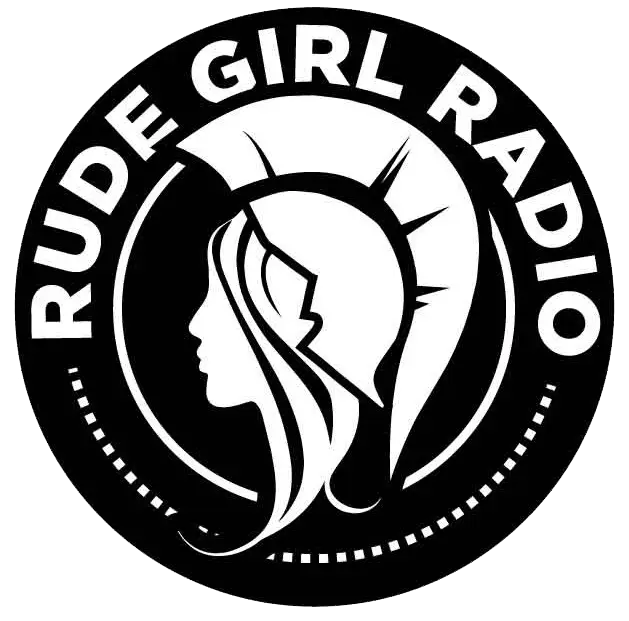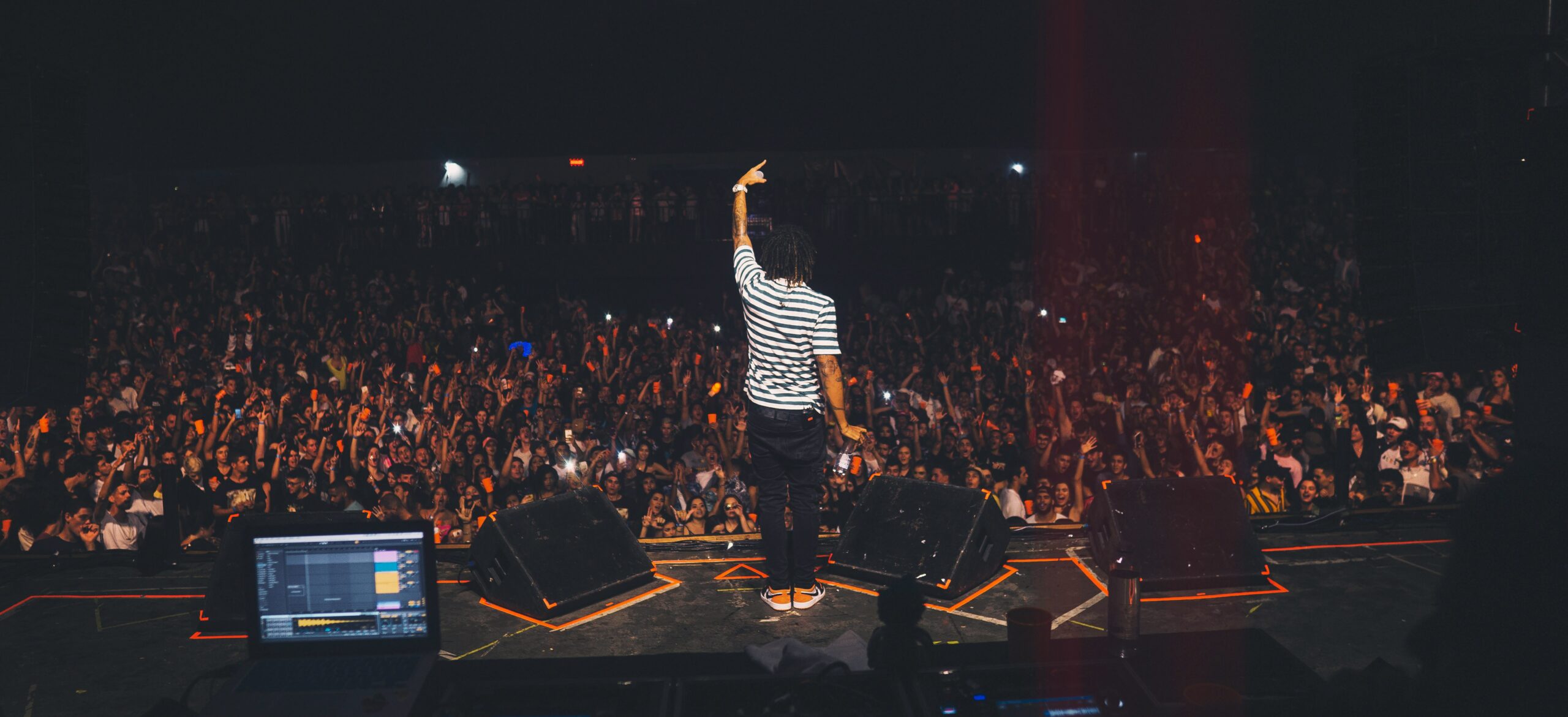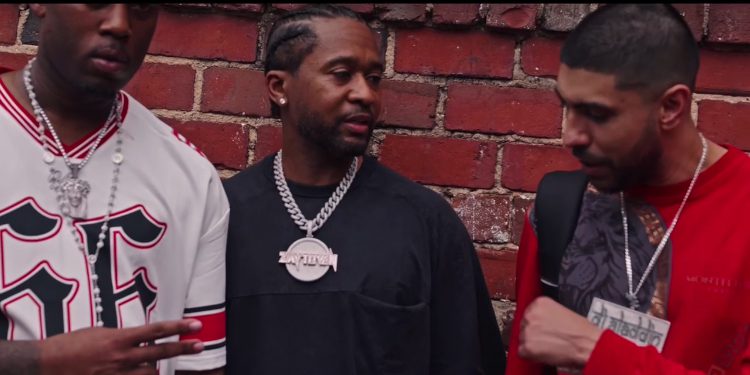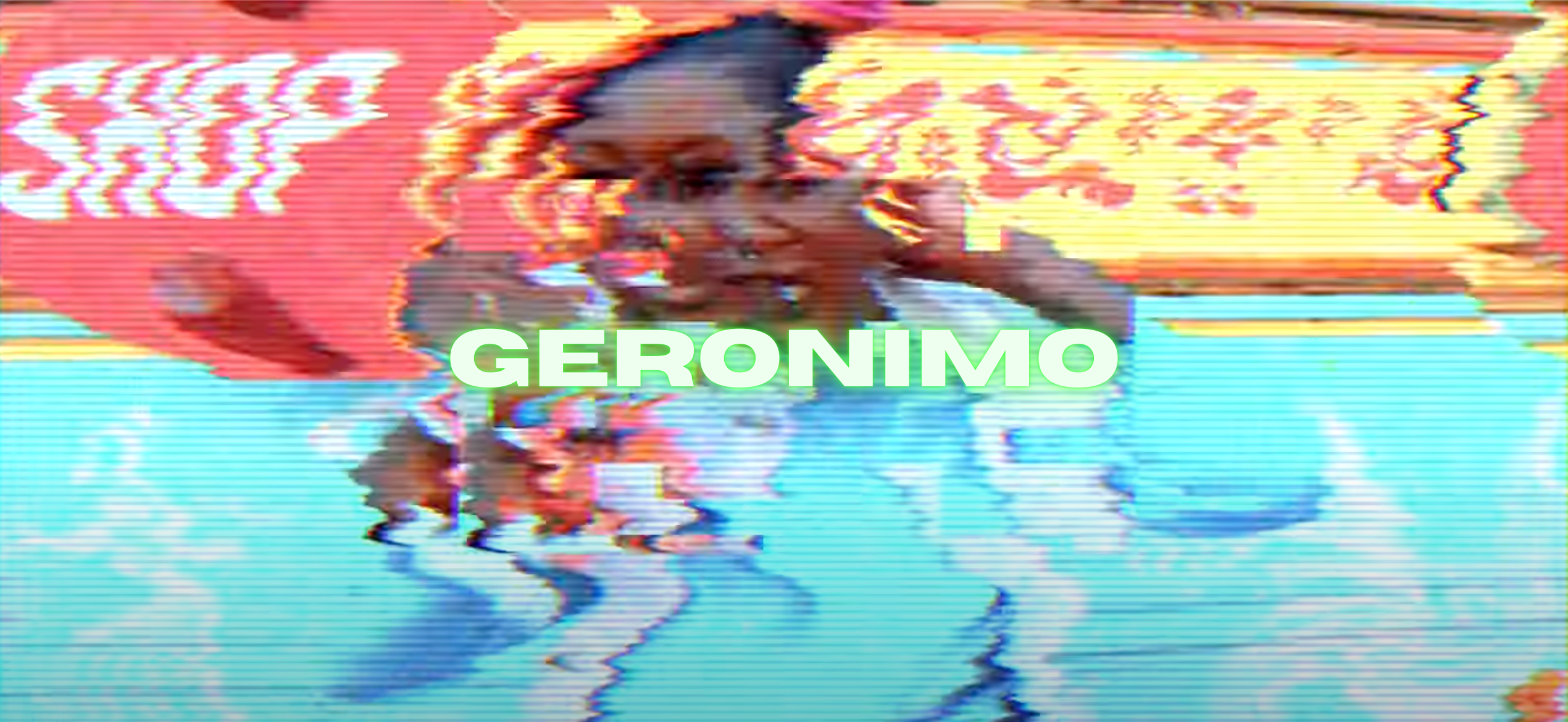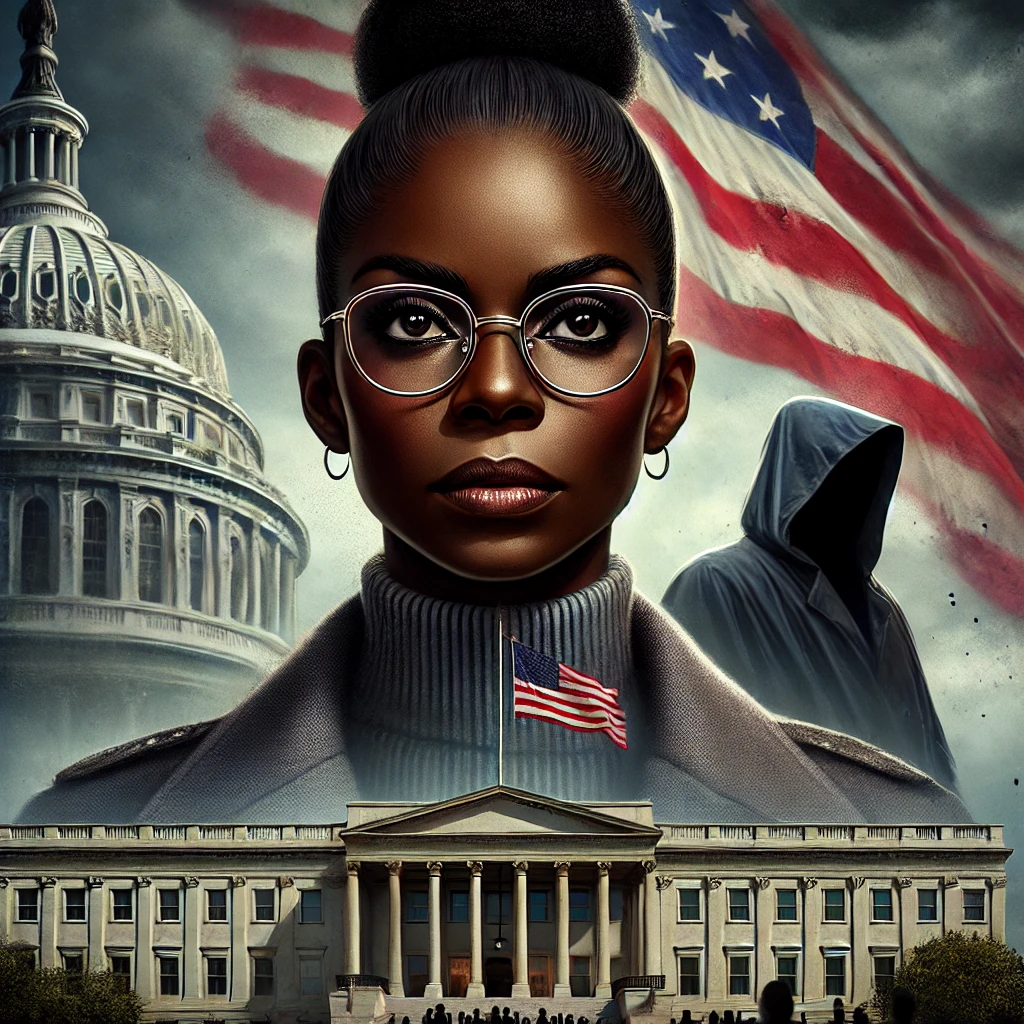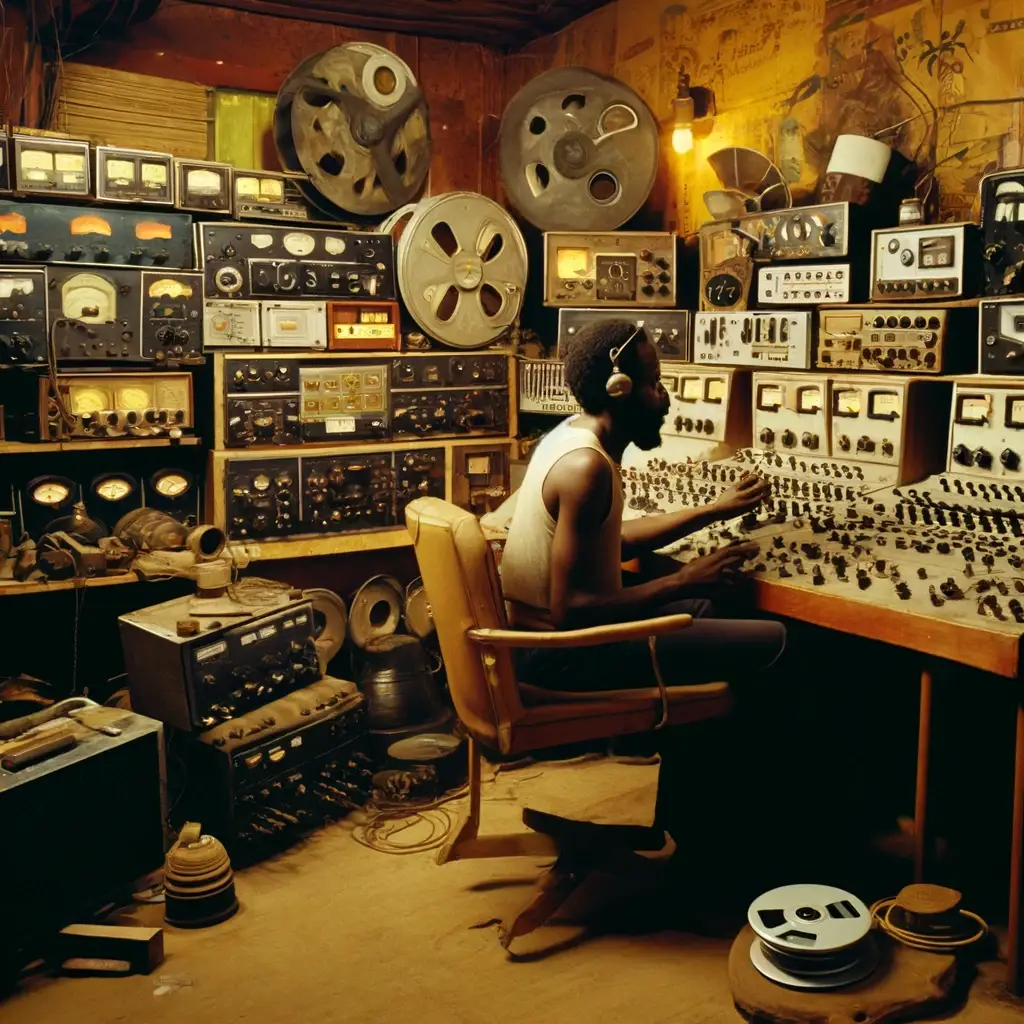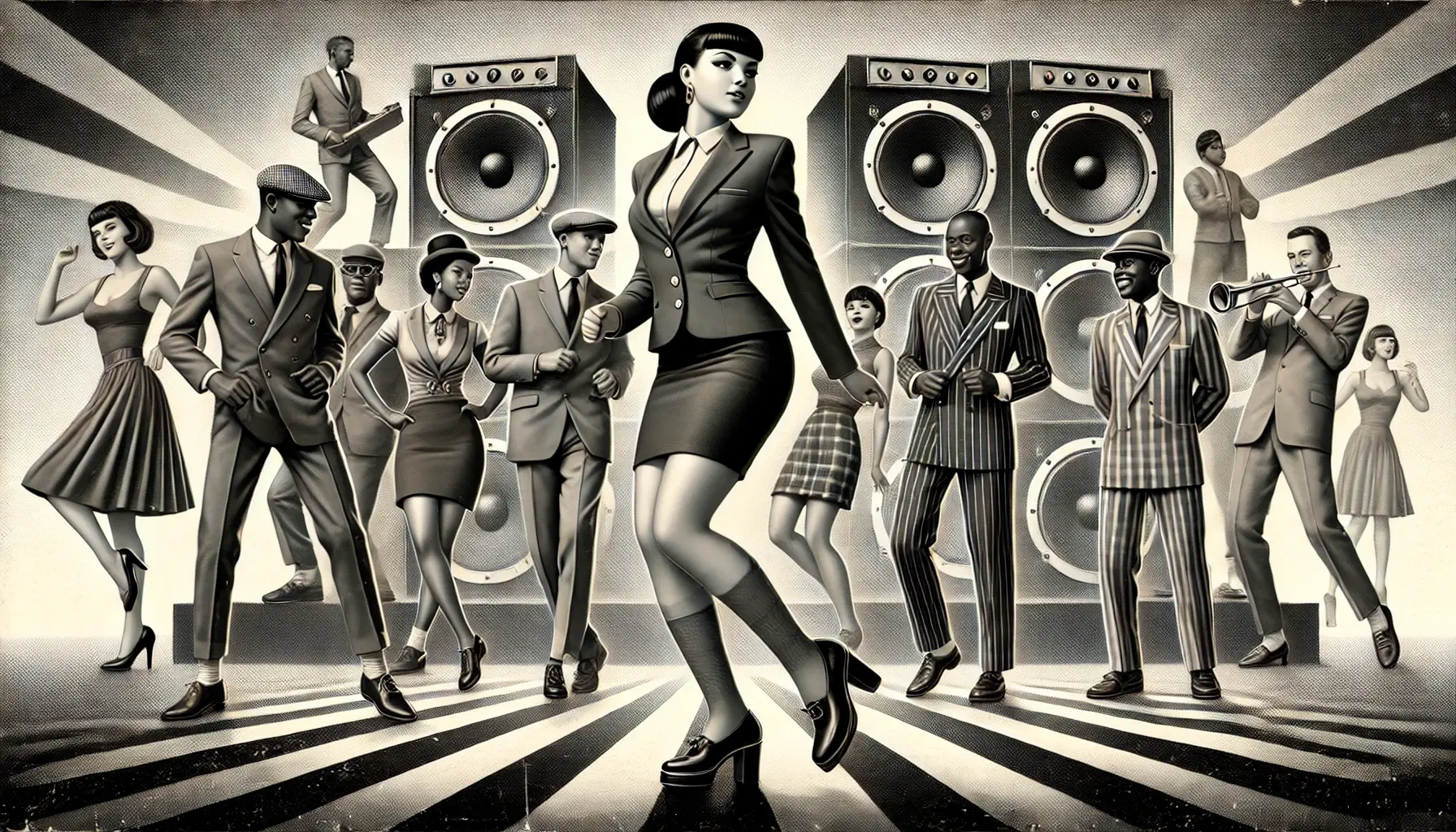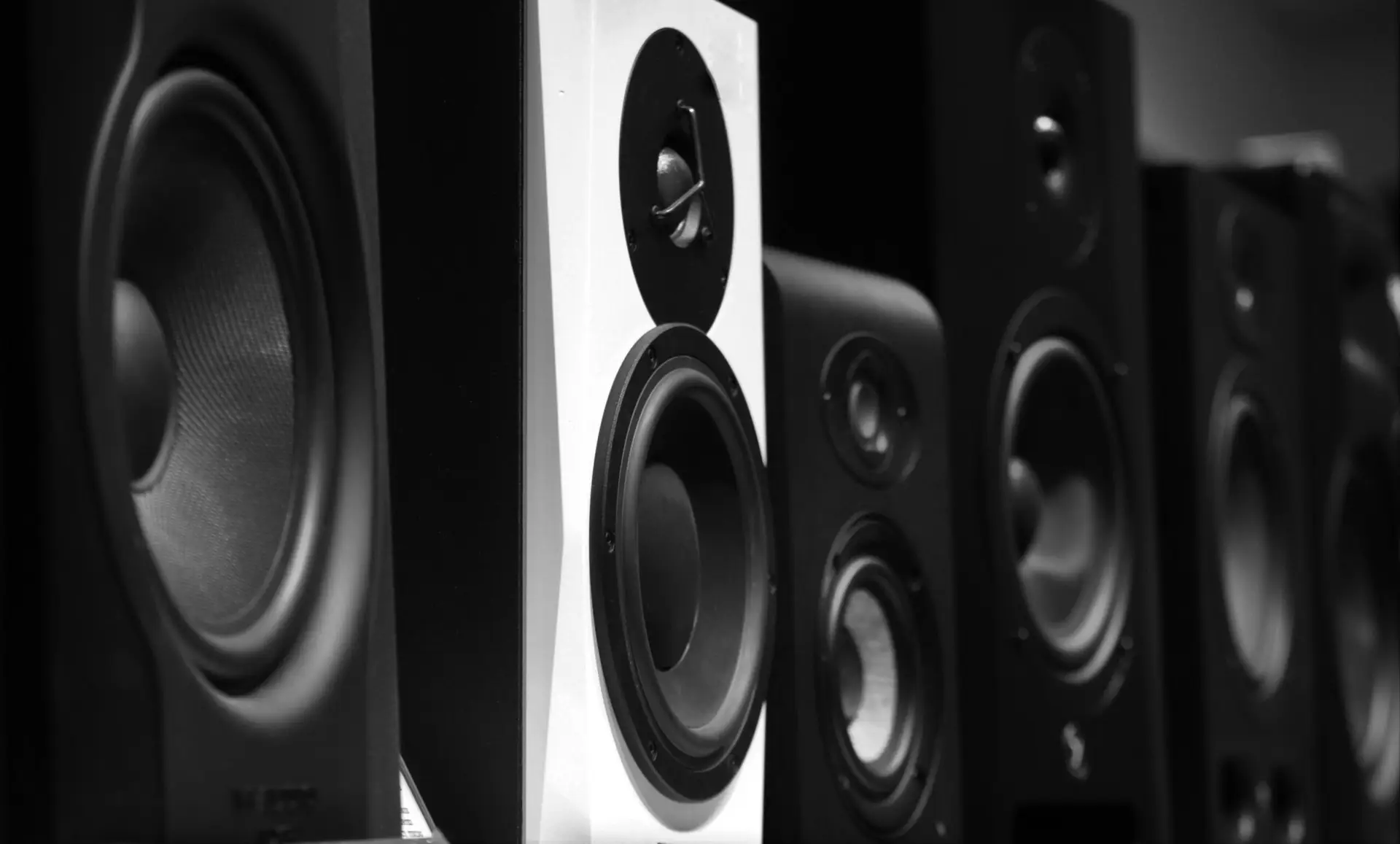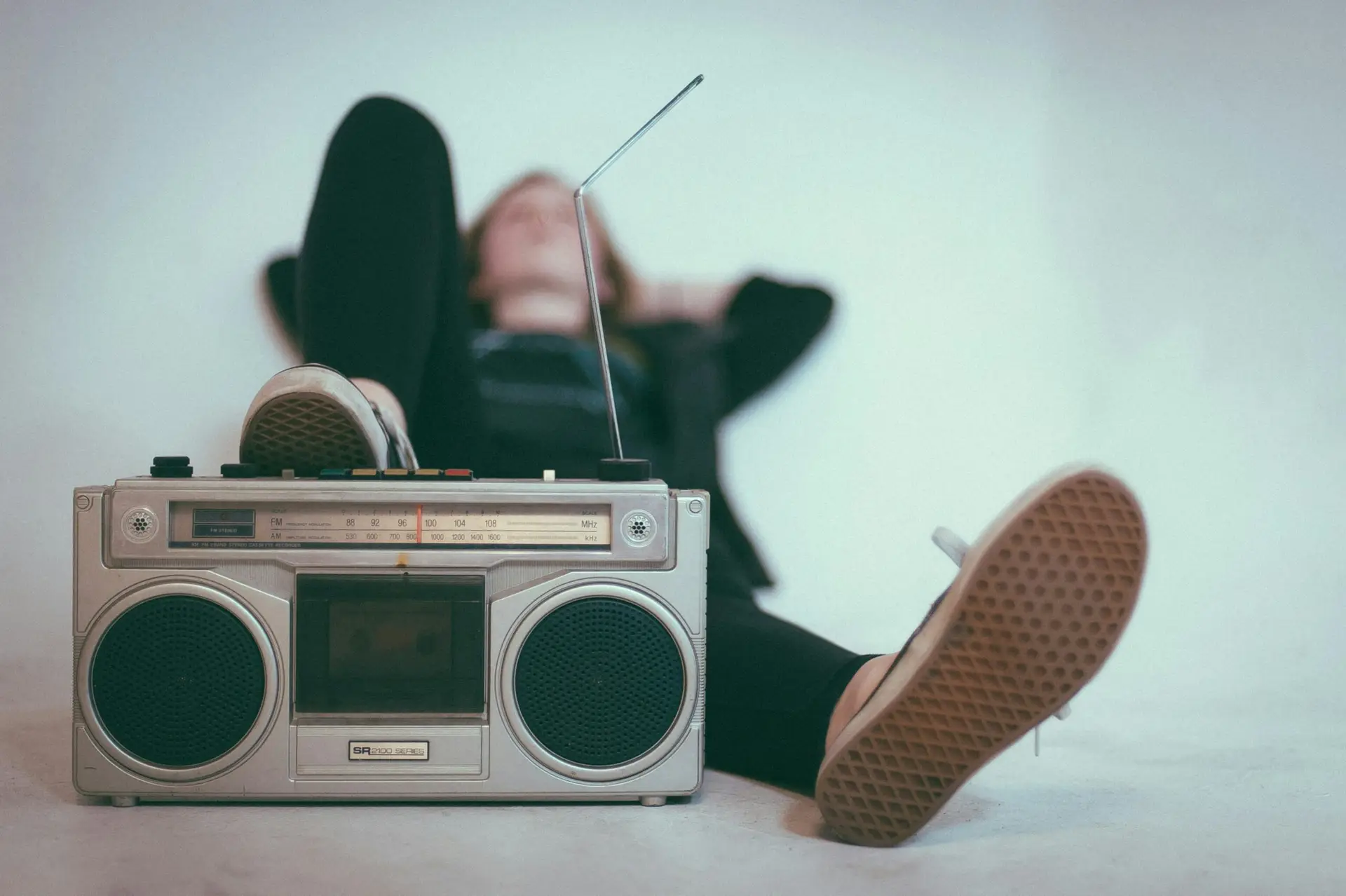In 2025, the music game doesn’t look like it used to. The charts may still show familiar names, but the real momentum? It’s coming from the ground up. Independent artists are building empires from their bedrooms, parking lots, and festival stages—with no major label backing, just hustle, strategy, and community. Nowhere was that more evident than at 404 Day with Zaytoven, where Atlanta’s underground met its next breakout wave. The Power of DIY in 2025 Gone are the days when an artist needed a label to get noticed. Between streaming platforms, direct-to-fan marketing, and digital distribution services like Zaytown Global, creators have full control over their careers. What used to take a team of ten and a six-figure deal can now be done with a smartphone, a studio setup, and a few trusted plugs. But make no mistake—talent still has to meet work ethic. That’s why events like 404 Day are crucial: they give independent artists a stage and a stamp. What 404 Day Taught Us This year’s 404 Day with Zaytoven brought out over 40 artists, two stages, and a crowd that showed up early and stayed late. From rising stars like China Monai and Big Homie Tyni to fan favorites like Sticky Lo, Tommy Cash, and Chelzzz, the lineup was stacked with names ready to move from underground to unforgettable. The difference? These artists didn’t wait for permission. They performed like headliners, networked like professionals, and moved merch like moguls. It was proof that the streets are watching—and so is the industry. Why Platforms Like Rude Girl Radio Matter At Rude Girl Radio, we’ve always believed that the future of music isn’t decided in boardrooms—it’s born in community. We exist to amplify the voices that don’t fit the mainstream mold. Artists who speak from the heart, experiment with sound, and push the boundaries of genre. Independent doesn’t mean invisible. We play what the FM stations won’t. We support the ones who are building something real. And most importantly, we give them space to grow, be heard, and connect with audiences who get it. How to Stand Out as an Independent Artist Here’s what we’ve learned from working with independent creators every day: Build your brand before your buzz. Know who you are and what you represent. Use live shows to build community. Festivals like 404 Day are more than just performances—they’re networking gold. Leverage media that supports you. Platforms like Rude Girl Radio, The Progress Report, and America’s Realest are always scouting. Stay consistent. One single won’t build a legacy—but consistency will. Invest in yourself. Whether it’s visuals, mixing, or merch, treat your art like the business it is. What’s Next 404 Day reminded us that the underground isn’t just alive—it’s thriving. And the artists who showed up? They’re leading the charge. At Rude Girl Radio, we’re expanding our commitment to indie talent with more showcases, live interviews, on-air music reviews, and even brand partnerships designed for unsigned artists. We’re not waiting for the industry to catch up—we’re building our own. 📡 Want to get featured on Rude Girl Radio or tap in for the next showcase? DM us or visit @djrootsqueen to submit your music and be part of the movement.
404 Day with Zaytoven 2025: Atlanta’s Soundtrack of Unity
From two packed stages to surprise guests and nonstop energy, 404 Day with Zaytoven 2025 brought Atlanta’s creative heartbeat to The LINQ. Curated by Zaytoven himself, the festival united artists, fans, and media for a day that celebrated the essence of the 404—through music, culture, and authentic connection.
💥 DaphoDILL Releases Bold New Visual for “GERONIMO” – Watch Now on VEVO!
DaphoDILL just dropped the official music video for “GERONIMO” on VEVO, and it’s an absolute statement piece. Distributed by Zaytown Global, this visual marks a major milestone in her journey — and she’s diving in headfirst with power, style, and intention. With a cinematic edge and fearless energy, “GERONIMO” captures everything we love about DaphoDILL: bold storytelling, magnetic presence, and a sound that refuses to be boxed in. From the moody lighting to the unapologetic performance, the video feels like a battle cry — a declaration of independence, strength, and artistic freedom. 🎶 The track hits with emotional weight and high-impact production, wrapped in DaphoDILL’s signature voice. It’s daring. It’s real. And it’s hers. This is more than a video — it’s a moment. With Zaytown Global behind the distribution and VEVO as the platform, Daphodill is stepping into the spotlight in full force. 👉 Watch “GERONIMO” on VEVO Now ✨ Like, comment, and subscribe to show love. This is just the beginning. https://www.youtube.com/watch?v=1AeVtNibEXA
Betrayed by the System: Racism, Homophobia, and Institutional Neglect in Mississippi
A State Designed to Silence Mississippi, a state long plagued by systemic oppression, finds itself at the center of yet another human rights scandal—this time involving the Mississippi Army National Guard, the Jackson VA Medical Center, and the state’s highest-ranking officials. At the heart of this controversy is Shannon Dill, a Black LGBTQIA+ veteran whose story reveals the pervasive abuse, cover-ups, and institutional failures that continue to harm marginalized communities. Her harrowing experience exposes the intersection of racism, homophobia, sexual violence, and government corruption—a damning reflection of how Mississippi continues to operate with impunity. Shannon’s case is more than one woman’s fight for justice—it is an urgent call to dismantle a system built to suppress survivors and silence the oppressed. Sexual Violence, Cover-Ups, and Military Betrayal Shannon Dill enlisted in the Mississippi Army National Guard expecting discipline, honor, and service to her country. Instead, she encountered sexual assault, retaliation, and an institution determined to protect its perpetrators over its soldiers. She alleges that Chaz Coleman raped her while she was intoxicated and recorded the assault. When she reported the crime, her case was ignored, delayed, and systematically buried by military officials, the Pentagon, and state authorities. Instead of seeking justice, military leadership: Covered up her rape and dismissed her claims. Subjected her to forced alcohol consumption while deployed. Falsified disciplinary records to damage her credibility. Enabled racist and homophobic treatment of Black and LGBTQIA+ service members. Allowed white soldiers preferential treatment, while Black service members faced harsher punishment and fewer opportunities. Even Mississippi’s highest-ranking military official, General Janson D. Boyles, failed to act on her reports.Her case is not an isolated incident—but a pattern within the military and Mississippi’s institutions. A System That Punishes the Vulnerable Shannon sought refuge in the Jackson VA Medical Center, hoping for support in the wake of her trauma. Instead, she was met with medical negligence, psychological abuse, and systemic racism. VA therapist Sharon Sherinian harassed and interrogated her, blaming her for her own trauma instead of providing support. Doctors prescribed medications with no follow-up, treating her not as a patient but as a bureaucratic checkbox. Mental health professionals forced her to discuss her rape with male therapists, disregarding her identity as a gay woman and survivor of sexual violence. Even Black VA professionals failed her, choosing to uphold a toxic system rather than advocate for real change. This deliberate negligence is part of a larger crisis within the VA system, where LGBTQIA+ and Black veterans face systemic discrimination—a reality confirmed by a survey from the American Federation of Government Employees, in which 78% of VA employees reported racism as a major issue (AFGE Report). Shannon’s experience at the Jackson VA Medical Center is not a failure—it is an intentional act of institutional betrayal. The Political Corruption That Keeps Survivors Silent Shannon Dill’s case extends beyond the military and medical system—it is a reflection of Mississippi’s deeply corrupt political landscape. Governor Tate Reeves allegedly stole her creative work—a campaign video addressing veteran suicides—without her permission, using it for political gain while ignoring her calls for help. State officials and local law enforcement allegedly fabricated reports to criminalize her, falsely claiming she owned a firearm. Psychological warfare tactics were allegedly used against her to discredit her memory and suppress her voice. Instead of addressing systemic racism, military sexual assault, and LGBTQIA+ discrimination, Mississippi’s leadership prioritizes maintaining power over protecting its citizens. A Call for Federal Action: Demands for Justice Shannon’s story is one of survival, resistance, and exposing a system that thrives on silence. But silence is no longer an option. The following urgent demands must be met: Federal Investigation & Oversight The Department of Justice and military oversight committees must investigate rape cover-ups, racial discrimination, and institutional abuse within the Mississippi Army National Guard and VA system. The Pentagon must reexamine all dismissed sexual assault reports from military service members. Accountability for Perpetrators Mississippi military officials who covered up sexual assault must be prosecuted. Immediate termination of VA professionals implicated in medical negligence and psychological abuse. Legislative Oversight & Policy Changes Mandatory LGBTQIA+ and racial sensitivity training for military and VA personnel. Stronger whistleblower protections for service members reporting discrimination, sexual violence, or harassment. Public Awareness & Advocacy Shannon’s case must be shared nationwide to expose the systemic failures within Mississippi’s institutions. National media must shine a spotlight on the culture of racism, homophobia, and sexual violence that continues within the U.S. military and VA system. Mississippi Must Answer for Its Crimes – Take Action Now Shannon Dill’s story is not just about her—it is about the countless others who have been silenced, oppressed, and betrayed by a system designed to break them. 💥 Now is the time to act. Here’s how you can help: 📢 Use Your Voice: Share this article, spread Shannon’s story, and demand that media outlets cover her case. 📬 Contact Lawmakers: Demand congressional action to protect LGBTQIA+ and Black service members, hold perpetrators accountable, and reform the VA system. 🎗 Support Survivors: Donate to organizations advocating for military sexual assault survivors and Black LGBTQIA+ veterans. [List of organizations] 🛑 Boycott & Protest: Hold Mississippi’s government accountable by calling out Governor Tate Reeves and other officials who have allowed systemic abuse to continue unchecked. 💡 Justice for Shannon Dill. Justice for all survivors. The system must change.
Join Us as Rude Girl Radio is Honored at the Georgia State Capitol!
Rude Girl Radio is being honored at the Georgia State Capitol for its contributions to radio, culture, and independent music! This recognition highlights the platform’s impact in amplifying voices and shaping today’s music landscape. Join us on February 27, 2025, from 9 AM – 1 PM at the Georgia State Capitol (206 Washington St, Atlanta, GA) for a special celebration hosted by Dee Hill, Senator Rhett, and Representative Rhonda Burnough. The event will pay tribute to Georgia DJs past and present who have influenced the industry and shaped the culture.
Additionally, Rude Girl Radio has been invited to participate in the Men & Women In Radio Inaugural Parade on July 7, 2025, in Jonesboro, GA—another exciting opportunity to celebrate the legacy of radio professionals.
We are honored to receive this recognition and invite you to celebrate with us! Thank you for your support, and we look forward to representing Rude Girl Radio at this historic event.
The Birth of Remix Culture: How Dub Music Revolutionized Modern Mixing
When you think about modern remixing, you might picture hip-hop producers flipping samples, electronic DJs layering effects, or even pop engineers tweaking vocal tracks for a new version of a hit song. But before all of that, in the sound system culture of 1970s Jamaica, a group of pioneering engineers reshaped the very DNA of recorded music. Dub music—pioneered by legends like King Tubby, Prince Jammy, and Scientist—didn’t just create a new genre; it laid the foundation for modern channel-board remixing, revolutionizing the way we think about music production. Lee Perry in his studio in Kingston, Jamaica 1976 Dub: The Art of Stripping Down and Building Up Dub wasn’t just a style; it was a technique. Producers took existing reggae recordings and isolated, manipulated, and reshaped their elements—a process that sounds familiar today in everything from EDM to hip-hop. The approach centered around multitrack mixing, where separate elements of a song (bass, drums, vocals, horns, guitar) were treated like building blocks. By stripping songs down to their rawest forms, these engineers turned the mixing board into an instrument. King Tubby: The Originator At the heart of dub’s evolution was King Tubby, a sound system engineer with a scientist’s mind and an artist’s soul. He pioneered the removal of vocals from reggae tracks, leaving behind deep basslines and echoing drum beats drenched in spring reverb and tape delay. This process didn’t just create a new way to listen to music—it transformed the mixing console into a creative tool, something unheard of at the time. His work on early dub records like King Tubby Meets Rockers Uptown showcased how a single track could be deconstructed and reshaped into multiple versions, with different levels of space, rhythm, and effects. King Tubby’s ingenuity wasn’t just about technique—it was about resourcefulness. In Jamaica during the late 1960s and early ‘70s, access to high-end studio equipment was limited, and much of what was available was either outdated or prohibitively expensive. Unlike major recording studios in the U.S. and U.K., Jamaican engineers had to work with what they had, often repurposing old radio, television, and military equipment to build custom sound systems. Building from Scrap: King Tubby’s DIY Approach Tubby, originally trained as an electronics repairman, took a scientific approach to sound engineering. He salvaged broken transistors, vacuum tubes, and capacitors from discarded radios and amplifiers, modifying them to create entirely new effects. One of his greatest innovations was his custom-built mixing console, which he rewired to allow for extreme manipulation of sound. Homemade Spring Reverb: Tubby modified old spring reverb units—often salvaged from broken guitar amplifiers—to add depth and resonance to tracks. Instead of using expensive studio reverb plates, he found ways to amplify the mechanical vibrations of springs to create the signature cavernous echoes that defined dub music. Custom Tape Delay: Tape delay was a critical component of his sound, but professional delay units were rare in Jamaica. Tubby built his own delay effects by manually adjusting reel-to-reel tape machines, feeding the sound through multiple loops to create an evolving echo effect. Rewiring the Mixing Board: Most mixing consoles at the time were designed for conventional recording and playback, but Tubby saw them as instruments in themselves. He modified his mixing board to isolate different elements of a track, allowing him to strip away vocals, boost drum and bass frequencies, and manipulate reverb and delay in real time. Turning the Studio into an Instrument Unlike traditional engineers, Tubby wasn’t just recording music—he was playing the studio itself. His approach to deconstruction was radical: instead of seeing a song as a finished product, he treated it as raw material to be reshaped. “Versioning” Tracks: Instead of simply remixing a song in a conventional sense, Tubby created multiple “versions” of the same track, each with different layers of effects, filtering, and space. This was revolutionary because it allowed the same song to be experienced in entirely new ways. Live Dub Mixing: Using his custom console, Tubby would manipulate faders, delay, and reverb live, almost like a jazz improviser. His mixes weren’t just edits—they were performances, adding a dynamic, hands-on element to sound system culture. Bass as the Foundation: He recognized that reggae’s power came from its basslines, so he used filtering techniques to emphasize low frequencies while stripping away excess instrumentation. This focus on bass and space became a defining feature of dub, influencing everything from hip-hop to electronic dance music. A Legacy of Sonic Experimentation King Tubby’s ability to innovate with limited resources proved that necessity is the mother of invention. Without access to the high-tech tools of major studios, he built his own, pioneering techniques that shaped not just reggae and dub, but the entire landscape of modern music production. His work laid the foundation for remix culture, inspiring genres from hip-hop (which borrowed the concept of the instrumental dub version) to EDM and even ambient music. By transforming scarcity into creativity, Tubby turned the studio into a playground for sonic experimentation, proving that music isn’t just about instruments—it’s about the manipulation of sound itself. Prince Jammy: The Expansion of Dub Technology Prince Jammy’s approach to dub was both an evolution and a reinvention. While King Tubby’s genius lay in manipulating analog equipment to create atmospheric, stripped-down versions of reggae tracks, Jammy refined and expanded these techniques with greater precision. He introduced a more methodical use of faders, EQ sweeps, and filters, carefully sculpting sound in a way that brought new depth and structure to dub music. His mixing techniques allowed for more intricate layering of echoes, reverb, and bass frequencies, creating a sound that was not only immersive but also highly controlled. This refined approach gave dub a cleaner, sharper aesthetic, setting the stage for its influence on other genres. As digital technology emerged in the late 1970s and early ‘80s, Jammy became one of the first Jamaican producers to embrace its potential, ushering in a new era for reggae and dancehall. His production of Wayne Smith’s “Under Mi Sleng Teng” in 1985
The History of the Rude Girl: A Legacy of Rebellion, Liberation, and Sound System Culture
When we think of the Rude Girl, we’re talking about more than just a fashion statement—it’s a mindset, a movement, and a musical revolution. From the streets of Jamaica to the underground clubs of London, the Rude Girl was bold, independent, and unapologetic, embodying the spirit of rebellion against oppression, colonialism, and inequality. Rooted in the same fire that sparked the Rude Boy culture, the Rude Girl stood as a symbol of liberation, protest, and resilience, shaping both the music and the aesthetic of the Ska, Rocksteady, and Reggae movements. But this isn’t just history—the Rude Girl spirit is alive and evolving in 2025, carrying its legacy into music, fashion, and activism. The Origins of the Rude Girl: Liberation & Protest The Rude Girl movement emerged in the 1960s alongside the rise of Rude Boys in Jamaica. These weren’t just street toughs; they were youth rebels pushing back against a corrupt system, demanding respect and freedom in a post-colonial Jamaica. Their style—sharp suits, pork pie hats, and ska music blasting through sound systems—was a form of self-assertion in a society that sought to marginalize them. The Rude Girls stood just as strong, fighting the same fight but with their own attitude and aesthetic. They rejected the idea that women should be passive, obedient, or silent. Instead, they took to the dancehalls, the streets, and the sound systems, making their presence felt in a male-dominated world. They were: 🔥 Defiant – They didn’t conform to expectations. They challenged gender norms and fought for equality, respect, and power. 🔥 Revolutionary – They stood in solidarity with working-class struggles, pushing back against social injustice and discrimination. 🔥 Intertwined with Music – Rude Girls were deeply connected to sound system culture, dancing to ska, rocksteady, and early reggae in Kingston’s most rebellious scenes. By the late ‘60s and early ‘70s, the Rude Girl culture traveled with Caribbean immigrants to London, Birmingham, and Coventry, where it mixed with British subcultures like punk and mod, influencing the rise of the 2-Tone movement and bands like The Specials and The Selecter. Rude Girls & Music Culture: From Dancehalls to the Global Underground Music has always been the heartbeat of Rude Girl culture. Whether in Jamaica, the UK, or beyond, the movement was inseparable from the sound systems that blasted ska, reggae, and later, dub and dancehall. 🎶 Ska & Rocksteady (1960s): The foundation—fast, upbeat, and politically charged music that spoke to working-class struggles. 🎶 Reggae & Dub (1970s): A deeper, bass-heavy evolution of the sound that became a platform for revolutionary messages and sonic experimentation. 🎶 2-Tone Ska (Late 1970s-80s): A British revival that combined punk energy with ska’s protest spirit, bringing unity between Black and white youth fighting against racism. 🎶 Dancehall & Sound System Culture (1990s-Present): The high-energy, rebellious offshoot of reggae where Rude Girl aesthetics merged with dancehall queens, DJs, and selectors pushing boundaries. From Lauryn Hill to Lady Saw, Neneh Cherry to M.I.A., Ms. Dynamite to Spice, the Rude Girl energy has never left music—it just keeps evolving. Bringing the Rude Girl Aesthetic to Life in 2025 & Beyond The Rude Girl isn’t just a look—it’s a movement, and in 2025, that movement is alive and thriving in new ways. 🔊 Musically: The DIY, underground spirit of sound systems, pirate radio, and digital independence keeps the culture alive, whether through hip-hop, grime, Afrobeat, or dancehall. We amplify women’s voices in DJing, production, and curation, just like Rude Girls did in early sound system days. 🖤 Fashion & Aesthetic: The Rude Girl look was effortlessly rebellious—sharp tailoring, bold patterns, checkerboard prints, heavy boots, statement accessories. Today, it merges with streetwear, high fashion, and techwear, blending vintage ska styles with futuristic edge. 💥 Attitude & Activism: The Rude Girl remains a force against oppression. Whether through music, social movements, or online spaces, the 2025 Rude Girl speaks truth to power, amplifies marginalized voices, and stands up against systems that hold people back. 🚀 Future of Rude Girl Culture: With platforms like Rude Girl Radio, we’re not just preserving the legacy—we’re pushing it forward. We take the rebel energy of Kingston, London, and the underground scenes and inject it into the next generation of music, fashion, and activism. The Rude Girl Lives On The spirit of the Rude Girl isn’t stuck in history—it’s a living, breathing force. The rebellious nature, the fearlessness in sound and style, and the commitment to liberation through music are just as relevant now as they were in the dancehalls of 1960s Kingston. So whether you’re a DJ spinning bass-heavy riddims, a musician pushing boundaries, or a creative redefining the aesthetic, the Rude Girl movement is yours to carry forward. ⚡ Stay bold. Stay loud. Stay Rude. ⚡
From Pirate Radio to Internet Radio: The Evolution of Independent Broadcasting
For decades, independent broadcasters have fought to break through mainstream media’s control of the airwaves. What started as pirate radio: underground stations broadcasting illegally, has now evolved into internet radio, a digital space where anyone can stream to a global audience. But the spirit of rebellion, creativity, and independent curation remains the same. How did we go from pirate radio’s illegal FM signals to today’s on-demand, algorithm-driven world of internet radio? Let’s take a look. The Rise of Pirate Radio (1940s-1990s) Pirate radio refers to unlicensed radio stations operating outside government regulations. These stations often emerged in response to rigid broadcasting rules, pushing underground music, alternative voices, and countercultural movements. Pirate Radio’s Early Days: The Open Seas In the 1940s and 1950s, pirate stations found a loophole: broadcasting from ships in international waters. This meant they were out of the jurisdiction of national regulators. One of the first was Radio Mercur (Denmark, 1958), followed by stations like Radio Nord (Sweden) and Radio Veronica (Netherlands). Their influence was so strong that the BBC later revamped its programming to compete. The Underground Vibe: Hip-Hop, Reggae & Dance Music By the 1980s and 1990s, pirate radio had gone mobile, especially in urban areas like London and New York. Stations like Kool FM in the UK became hubs for jungle, garage, and grime; genres ignored by mainstream radio. In the U.S., pirate stations brought hip-hop and reggae to communities that lacked representation on commercial airwaves. Stations used DIY setups, transmitters hidden in basements, rooftops, or even moving vehicles to avoid detection. Despite police raids and government crackdowns, pirate radio became a launching pad for countless DJs, MCs, and producers who later went mainstream. The Digital Shift: From FM to Internet Radio (1990s-Present) As the internet emerged in the 1990s, a new opportunity arose: broadcasting without the need for FM or AM signals. The Birth of Internet Radio In the late 1990s, early streaming technologies (like RealAudio) enabled the first online radio stations. Platforms like Shoutcast and Live365 popped up, allowing independent broadcasters to stream worldwide. Traditional radio stations began offering online simulcasts, expanding their reach beyond local audiences. The 2000s: Streaming & Personalization The rise of Pandora (2000), Last.fm (2002), and iTunes Radio (2003) introduced algorithm-driven music curation. Independent stations thrived, giving niche genres and underground artists a global platform. Pirate stations that had been forced off FM moved online, keeping their audiences but ditching the legal risks. The 2010s-Present: The Rise of Independent Platforms Internet radio is now a massive, diverse space with both corporate giants and underground stations: Mainstream services like Spotify, Apple Music, and TuneIn dominate music discovery. Independent platforms like NTS Radio, Dublab, and Rude Girl Radio keep the underground spirit alive with genre diversity, live sets, and experimental content. Live streaming on Twitch, YouTube, and Mixcloud has blurred the line between radio, podcasts, and DJ culture. What’s the Difference? Pirate Radio vs. Internet Radio Pirate Radio Internet Radio Illegal/unlicensed Legal or gray area Limited to FM/AM Global reach via streaming Secret/movable locations Can be broadcasted from anywhere Hard to monetize Easier ad revenue, subscriptions Despite the technological shift, the mission remains the same: giving a voice to underground artists, independent DJs, and alternative scenes. The Legacy: How Pirate Radio Shaped Today’s Internet Radio Independent radio is still a rebellious space. Whether through FM or the internet, underground stations continue to challenge commercial radio’s predictable playlists and corporate control. Internet radio allows global reach without the legal risks. Where pirate radio DJs once risked arrest, today’s broadcasters can operate freely, though some platforms (like SoundCloud and Mixcloud) still face takedowns over music rights. DJs, curators, and niche communities thrive more than ever. Platforms like Rude Girl Radio, NTS, The Lot Radio, and Dublab prove that there’s still a demand for real curation, culture, and experimentation in radio. Pirate radio didn’t die, it evolved. The tools may have changed, but the DIY energy, underground influence, and commitment to breaking new artists live on. Final Thoughts: The Future of Independent Radio With AI-driven playlists and commercialized streaming services dominating, the need for real curation is more important than ever. Whether through underground internet stations, DJ-led Twitch streams, or niche music communities, the spirit of pirate radio lives on in all of us.
Update: Our Latest Programming Guide
Welcome to Rude Girl Radio, where music meets innovation and creativity thrives. 🎶 Our carefully curated lineup of shows brings you the best in modern music, classic hits, and everything in between. Whether you’re looking for the hottest tracks or a trip down memory lane, Rude Girl Radio has got you covered. Rhythm & Vibez 📅 Monday – Friday🕗 8 AM – 11 AM ET Kickstart your mornings with the perfect blend of positivity and smooth grooves! 🌟 Rhythm & Vibez is your go-to show for feel-good beats and uplifting tracks that energize your body, inspire your mind, and put you in the right mood to conquer your day. Whether you’re getting ready for work, commuting, or just easing into your morning, this show brings the vibes you need to rise and shine. Rhythm & Vibez is now playing until 11AM ET! Expect an eclectic mix of soulful melodies, chill rhythms, and upbeat anthems designed to motivate and elevate your mornings. Tune in and let Rhythm & Vibez set the tone for a productive, energized, and feel-good day! 🎶✨ Southern Star Radio 📅 Mondays 🕔 5 PM – 7 PM ET Step into the heart of Southern music with Southern Star Radio, your weekly spotlight on the rich and evolving sounds that define the South. 🎵✨ From the soulful depth of southern soul to the heartfelt twang of country, this show blends tradition and innovation, delivering a fresh perspective on timeless genres that continue to inspire and shape the music world. Every Monday evening, we bring you a curated selection of tracks that celebrate the vibrant cultural heritage of Southern music while showcasing emerging artists and fresh takes on these iconic styles. Whether you’re a long-time fan or discovering the beauty of Southern music for the first time, Southern Star Radio is your perfect soundtrack to start the week with soul, heart, and rhythm. 🌟 Tune in and feel the magic of the South! Mixtape Vault 📅 Tuesdays 🕖 7 PM – 8 PM ET Step into the ultimate time capsule of hip-hop history with Mixtape Vault! 🎤🔥 Every Tuesday evening, we unlock the archives to bring you the classic mixtapes, legendary tracks, and rare gems that defined the culture and influenced generations of artists. From the underground bangers that shook the streets to the iconic anthems that took the game mainstream, Mixtape Vault celebrates the artistry, hustle, and creativity of the mixtape era. Whether you’re reliving your favorites or discovering forgotten treasures, this hour is a tribute to the music that laid the foundation for today’s hip-hop sound. 🚨 Tune in, vibe out, and honor the legacy of mixtape culture! 808 South 📅 Wednesdays 🕔 4 PM – 8 PM ET Get ready to immerse yourself in the heartbeat of Southern rap with 808 South, your weekly destination for everything that makes Southern hip-hop legendary. 🎶🔥 This show is a deep dive into the essence of the South, where booming 808s, iconic rhythms, and unapologetic storytelling collide to create a sound that’s as dynamic as the culture itself. Every Wednesday evening, we celebrate the undeniable anthems, timeless classics, and trailblazing artists who have shaped the Southern hip-hop movement. From ATL’s trap anthems to Houston’s syrupy vibes and everything in between, 808 South brings you the beats and bars that define the South’s influence on the global music scene. Whether you’re a lifelong fan or new to the game, this show is a tribute to the grit, passion, and creativity that continue to drive Southern rap forward. 🌟 Turn it up and feel the power of the South! 🌟 Throwback Thursday: Golden Era 📅 Thursdays 🕓 4 PM – 8 PM ET Get ready to turn back the clock and relive the magic of hip-hop and R&B’s most influential decades with Throwback Thursday: Golden Era. 🎧✨ From the groundbreaking pioneers of the 80s to the revolutionary trailblazers of the 90s, this show is a celebration of the music that laid the foundation for today’s culture. For four solid hours, we’ll transport you to a time when boom-bap beats, soulful melodies, and lyrical genius ruled the airwaves. Expect everything from iconic anthems and timeless classics to those deep cuts that defined the Golden Era. Whether it’s the smooth grooves of 90s R&B or the gritty storytelling of 80s hip-hop, this show is all about honoring the legends who set the stage for generations to come. 🎤✨ Join us every Thursday for a journey through the roots of greatness! ✨🎶 Rude Girl Radio Live 📅 Thursdays 🕗 8 PM – 10 PM ET 🌟 Our PREMIER show! 🌟 Rude Girl Radio Live is the ultimate Thursday night experience, where music and culture collide in real-time. 🎙️✨ This is more than just a show—it’s a movement, bringing you up close and personal with the artists, innovators, and trendsetters who are shaping the future of music and the culture surrounding it. Broadcasting LIVE from the studio, this dynamic show is packed with exclusive interviews, engaging talk segments, and raw, unfiltered conversations that dive deep into the stories, sounds, and influences that matter most. From breaking industry news to behind-the-scenes insights, Rude Girl Radio Live is your front-row seat to the pulse of modern music and culture. End your Thursday night with energy, authenticity, and connection as we explore the hottest topics, emerging trends, and voices you need to know. 🎤✨ Join us live and be part of the conversation that’s driving the culture forward. Don’t just listen—experience it! 🎶🔥 The Hit List 📅 Fridays 🕖 5 PM – 6 PM ET 🔥 Start your weekend right with the ultimate Friday night vibe! 🔥 The Hit List is your one-stop destination for the hottest tracks tearing up the charts and dominating playlists everywhere. 🎶✨ From chart-topping anthems to viral sensations, this show brings you the songs everyone’s talking about. Whether you’re getting ready to go out, winding down after a long week, or just vibing at home, The Hit List sets the perfect tone to
Why Internet Radio is Revolutionizing the Music Industry
Photo by Eric Nopanen on Unsplash In today’s fast-paced digital landscape, internet radio is rapidly overtaking traditional FM radio as the go-to platform for both listeners and broadcasters. With its global accessibility, diverse content, and enhanced user experience, internet radio is reshaping the way we consume music and interact with media. Here’s why it stands out: 1. Global Reach Unlike FM radio, which is restricted to a limited broadcast range, internet radio is accessible from anywhere in the world. This allows stations to reach a truly diverse audience, connecting people across different cultures and regions. 2. Diverse Content Traditional FM radio stations often cater to mainstream tastes and commercial interests, leading to repetitive playlists. Internet radio, on the other hand, embraces niche genres, experimental music, and independent artists, providing a platform for creativity and innovation. 3. Fewer Advertisements Many internet radio stations operate with fewer ads or offer ad-free premium options, ensuring a smoother listening experience. FM radio, by contrast, is heavily ad-driven, interrupting music flow with frequent commercial breaks. 4. Interactive Features With internet radio, listeners can engage with DJs, request songs, and share content via integrated platforms and social media. FM radio, in comparison, offers limited interaction, usually restricted to call-ins and contests. 5. On-Demand Listening Internet radio often includes on-demand features like podcasts and curated playlists, giving listeners control over their content. FM radio, however, is strictly live, with no option to replay missed shows. 6. Superior Audio Quality Digital streaming ensures that internet radio maintains high-bitrate audio, resulting in superior sound quality. FM radio is subject to static, interference, and lower fidelity. 7. Data-Driven Broadcasting Internet radio provides broadcasters with real-time analytics, including listener demographics, location, and engagement metrics. FM radio, by contrast, relies on outdated survey-based audience estimates. 8. Cost-Effective for Broadcasters The low setup and operational costs of internet radio make it an attractive option for independent creators and niche broadcasters. FM radio requires expensive licensing, equipment, and infrastructure. 9. Multi-Device Accessibility Internet radio can be accessed through smartphones, computers, smart speakers, and even internet-connected cars. FM radio is limited to devices with built-in receivers. 10. Adaptability and Innovation Internet radio is easily updated to incorporate new formats, AI-curated playlists, and personalized recommendations. FM radio, bound by regulatory constraints, is slower to evolve. Why Artists and Labels Should Leverage Internet Radio For musicians and record labels, internet radio is a game-changer. Here’s why it’s an essential platform for music promotion: 1. ISRC Tracking and Royalty Reporting Internet radio platforms facilitate precise tracking through ISRC (International Standard Recording Code), ensuring accurate royalty distribution via SoundExchange. This guarantees artists receive proper compensation for airplay. 2. Cost-Effective Promotion Unlike FM radio, which requires substantial marketing budgets, internet radio provides a more affordable way for artists to gain exposure in major music markets and beyond. 3. Digital Integration Every streamed song includes links to platforms like YouTube, Spotify, and Apple Music, increasing visibility and driving traffic to an artist’s digital ecosystem. 4. Actionable Listener Data Internet radio offers detailed analytics, providing insights into audience demographics, peak listening times, and engagement trends—valuable information for refining marketing strategies. 5. Network Effect Across Multiple Cities With internet radio stations available in major music hubs, artists can gain traction in multiple markets simultaneously, expanding their reach without needing separate promotional campaigns. Internet Radio: The Future of Broadcasting For both listeners and artists, internet radio offers more freedom, flexibility, and opportunities than traditional FM radio. Whether you’re an independent musician looking for exposure or a music fan seeking fresh, diverse content, internet radio is the ultimate platform for the modern era. Ready to make the switch? Tune in to the future of music today.
